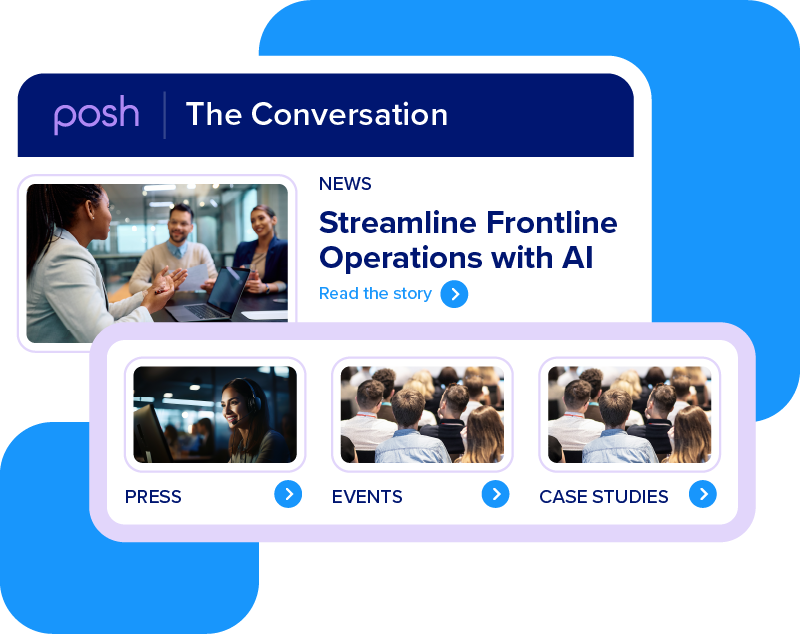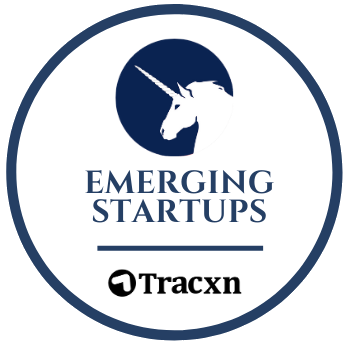Generative and conversational AI created quite the buzz in 2023, demonstrating productivity benefits for nearly every industry imaginable. As we enter into 2024, it’s clear that this technology has the potential to revolutionize the way we work, and banking leaders have already taken notice. According to McKinsey, generative AI is expected to boost annual profits in the sector by 9-15% from productivity gains alone.
However, it’s not as simple as deploying a chatbot and calling it a day. If banks and other financial institutions want to innovate with AI while elevating the experience of customers and employees, they’ll need an integrated system that can handle both sides. That’s where internal and external AI come into play — these tools offer support for employees and customers, respectively, creating a holistic solution that unlocks unprecedented synergies.
To understand how they work together, let’s take a closer look at how each system works on its own.
What Is External AI?
External AI is the customer-facing side of the solution, designed to enhance the user experience and streamline customer service operations. These systems leverage generative and conversational AI to interact directly with customers, providing self-service capabilities, such as answering questions, assisting in transactions and offering personalized recommendations. Automating these tasks allows banks to offer faster, 24/7 services while maintaining accuracy and collecting valuable customer data to further refine the banking experience. If a question falls outside the scope of the AI’s knowledge or training, the customer is simply transferred to a live agent who can provide assistance.
Use Cases for External AI Systems
External AI systems encompass a wide range of customer-facing applications, including:
- Digital assistant: AI-powered chatbots handle routine inquiries, provide account information, assist with services and provide instant access to text-based customer support anytime. Examples may include assistants embedded on a website or online banking application.
- Voice assistant: Using voice recognition and natural language processing, AI voice assistants improve accessibility by enabling customers to perform banking tasks through voice commands over the phone.
- Personalized recommendations: Based on customer data, external AI systems can offer tailored content recommendations and advice, suggesting products or services that align with their goals.
- Fraud detection: AI tools can also be used for security by continuously monitoring transactions for unusual patterns or suspicious activities that could indicate fraud.
What Is Internal AI?
Internal AI refers to the systems designed to support and enhance the customer service operations of a bank. These systems work behind the scenes, automating routine, time-consuming tasks like searching through customer records to provide employees with the information they need, when they need it. Not only does this minimize handle time, but it also ensures employees receive the support they need to effectively handle complex customer inquiries.
Use Cases for Internal AI Systems
Internal AI systems serve a range of roles in day-to-day banking operations. Some key functions include:
- Instant access to info: Search a vast repository of banking knowledge and customer data to minimize time spent looking for information.
- Training and onboarding: Facilitate quick onboarding of new staff with an AI tool that provides employees with instant access to the knowledge they need.
- Human resources: Streamline onboarding and training processes for HR and Learning and Development to maximize retention and productivity.
- Lending operations: Enable smooth lending operations by leveraging AIs capacity to quickly sift through relevant documents, reducing time spent searching through endless documentation.
- Compliance and regulatory guidance: Efficiently monitor and ensure compliance with ever-changing regulatory requirements for banking AI.
- IT & technical support: Support IT and help desk teams in finding precise answers related to password resets or workstation troubleshooting.
- Data-driven insights: Gain deep insight into knowledge gaps and common employee challenges to empower agents and make impactful decisions.
Synergizing Internal and External Systems: Bridging the Gap Between the AI Assistants
At first glance, the relationship between external and internal AI systems might seem like a simple hand-off when a customer inquiry becomes too complex. However, there are far more synergies to unlock here.
While the external AI directly handles most customer interactions with instant, round-the-clock service, it also collects valuable information for the internal system to use. When analyzed, this data can reveal patterns and commonalities between different customer inquiries. For instance, if multiple customers ask similar questions to the external AI, this insight can be used to enhance the internal AI’s knowledge base, equipping bank employees with pre-emptive answers and response strategies for frequently asked questions.
On the other hand, if live agents regularly encounter specific questions not currently addressed by the external system, this feedback can be used in developing new intents and functionalities to help serve the customers. This allows banks to reduce the need for live agent intervention as the customer-facing AI becomes more adept at handling a wider range of inquiries.
Additionally, if a complex question gets escalated to a live agent, the customer’s interaction is also seamlessly transferred with context, pre-populating internal AI systems with immediately helpful content to support the agent. .
Leveraging large language models (LLMs) across both employee and customer channels ensures consistency in responses and knowledge transfer, enhancing the overall accuracy and efficiency of banking operations. This process of sharing insights between internal and external AI solutions ultimately allows for continuous improvement of both customer-facing and internal support systems.
The Challenges of Change Management
Of course, not everyone in the organization will be on board with adopting new AI technology, let alone two separate (though synergistic) systems. Employees don’t have to be nervous about tools designed to answer questions they would normally field. To help ease these concerns, many banks position external and internal AI as tools meant to aid their work, not replace them. Going a step further, some choose to deploy these systems in a specific order.
Instead of implementing the external AI first — which often fields easy customer questions, leaving more complex inquiries for employees — some banks might opt to start with the internal solution, signaling their support to employees and empowering them to handle more complex tasks first. Once the sentiment has shifted, they can initiate the second phase by deploying the external system.
This strategic approach prepares employees to use these tools and address the more complicated issues that external AI could pass on. And with staff well-equipped to handle all kinds of inquiries, customers will experience a seamless transition from self-service to live support.
Get More Out of Your AI Systems With Posh’s AI Assistants
Looking for a synergistic AI system to handle external interactions and internal needs? Discover how Posh’s Digital and Voice Assistants work together with our Knowledge Assistant to deliver everything you need in an AI solution. Request a demo today.


Blogs recommended for you

January 4, 2024
Unlocking the Potential of Generative AI for Financial Institutions
Read More
Unlocking the Potential of Generative AI for Financial Institutions

October 31, 2023
Generative Al and Large Language Models: Applications Shaping the Banking Industry
Read More
Generative Al and Large Language Models: Applications Shaping the Banking Industry

February 2, 2024
Implementing AI during Your Telephony Move to the Cloud
Read More
Implementing AI during Your Telephony Move to the Cloud


Event -
Unlocking the Synergies of Internal and External AI in Banking
Are you attending and interested in learning more?
Register today
Visit event page to learn moreEmail info@posh.ai for the recording!

January 21, 2024

4:38 pm

Virtual event



Event Details
Speakers
No items found.







